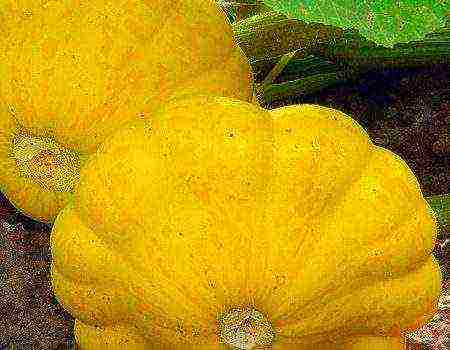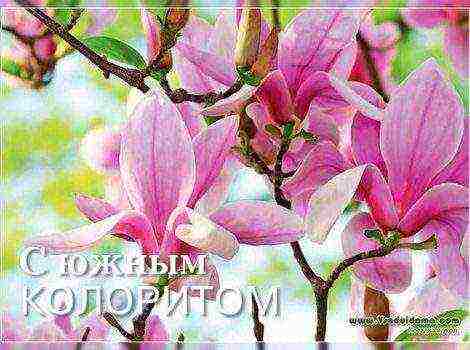Content
- 1 Moscow region, central Russia - where else can you plant and grow walnuts
- 2 How and when to plant and grow a tree from a seedling: conditions
- 3 Post-planting care: in spring, summer and autumn
- 4 How to properly care for the cultivation process: before ripening and after
- 5 Graft
- 6 Reproduction in the country
- 7 How to prepare seeds for planting
- 8 Planting seeds
- 9 Tree care
- 10 Conclusion
.
Seed propagation of a nut is one of the most popular ways in which it is important to pick up a good fruit. How to grow a walnut so that the tree gives a good harvest, we will figure it out further.
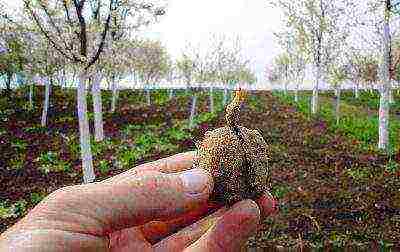
Seed propagation of nuts is one of the most popular and proven methods.
Germinating seeds
How to choose and how to germinate a walnut:
- Collecting nuts is carried out as they fall from the tree, you can knock them down.
- For sowing, the gardener selects large fruits with a thin shell and excellent taste. They take whole nuts, which are free of defects and cracks. Make sure there are no spots or dots on the shell.
- Do not use store fruits, as they may be old and unsuitable for growing.
- The pericarp is removed for faster germination. Peel the fruit gently without touching the inner rind.
- For convenience, rubber gloves are used.
- The peeled fruits are placed in a container with water. Those that have gone to the bottom are suitable for landing.
- After cleaning, the fruits are dried in the sun and put in the shade. Do not use heating technology to dry seeds.
Landing
If you do not know how to plant a walnut from a seed, follow the advice of experts. Planting seeds in open ground is done in autumn or spring.
Planting a nut in the fall is carried out on a regular territory, since during transplantation there is a risk of damaging the roots and ruining the plant. The diameter of the hole is about 1 m. The seeds must be deepened by 20 cm and sprinkled with soil mixed with humus.
Planting rules will help to grow a walnut tree that bears excellent fruit:
- Stratification should be carried out 3 months before disembarkation. Prepare wet sand and place the nuts in it at a temperature not exceeding 7 ° C. After a week and a half, you can see a growing seedling.
- Select the strongest seed from the germinated.
- It is important to place the seeds with the seam facing up. The hole holds approximately three fruits, which should be placed at a distance of 25 cm from each other. The main feature of laying out the seeds is the observance of geometric shapes: three nuts are laid out in a triangle, and four in a square.
- Fill in the hole and tamp the formed mound.
Planting capacity
How to properly plant a walnut in a container:
- A deep pot with drainage is suitable for planting. The first container should have a diameter and depth of 30 cm. This will allow the tree's root system to fit freely.
- Each time you transplant, you need to pick up a new pot, the diameter of which will be 8 cm larger than the previous one.
- The container should be placed in a room that is well lit by the sun. There should be no drafts and wind.
- When the flowers form, give the plant shelter from adverse influences from the outside.
- You can install the pot in a greenhouse environment. The tree does not like too dense soil, the soil should be slightly alkaline, very nutritious and loose.
Growing at home
You can plant and grow a tree at home, but this process is laborious.
How to grow a nut from a fruit: The fruit should be grown in large pots, as this will save the crop from severe frosts.
Large containers will provide the plant with the necessary useful components that it extracts from the soil. The walnut grown in this way is of medium size. You should not expect a rich harvest from him. Small in size and fruit of the tree. The taste of nuts is directly related to the care of the plant.
Care
Once you've learned how to grow a walnut from a seed, you need to take care of it. The worst enemy of the walnut is waterlogged or too dry soil. When there is too much moisture, the roots begin to rot and gradually die off.
Insufficient moisture threatens to stop the development of ovaries. On hot days, the amount of water should be increased. You may need to wrap the pot with a damp cloth to cool the roots.
In order to protect the plant from freezing, you need to bring it indoors or cover it with burlap. By a similar method, the culture is preserved from birds. If you are engaged in growing walnuts at home, then you should mulch the soil with peat in the spring, you can use manure, moss. Walnut rarely gets sick, but if spots appear on its foliage, then you need to treat it with a special liquid.
Fertilizers are left during the growing season when the crop needs additional feeding.
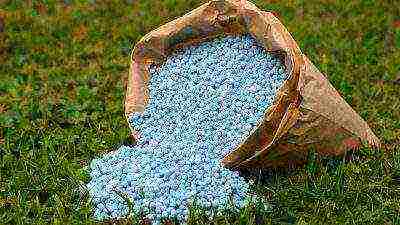
Walnut needs additional feeding during the growing season
The transplant is carried out in the fall. To do this, the tree is taken out of the pot and one tenth of the root system is cut off. The aboveground area also needs pruning. A transplant is needed in order for the nut to reach its final size. A tree that has taken root in a tub can be shaped into any shape.
Do not forget the first years of the plant's life to carry out the formation of the crown along with the removal of some of the flowers. This will prevent abundant fruiting. In summer, thin, weak shoots should be removed.
A tree planted correctly will grow healthy and bear fruit. Now you know how to plant a walnut from the fruit.
Subscribe Be aware of new products on our site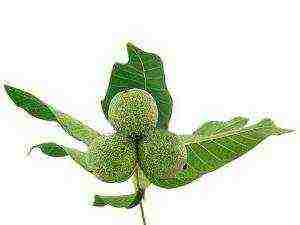
Walnut is a durable plant. There are trees that are over 300 years old. The plant loves light and moisture, so it grows best on drained soils with moderate moisture, in which there is a small constant groundwater level. The root system of the walnut is very powerful and penetrates deep into the soil.
 Climate
Climate
There are many frost-resistant varieties of walnuts, so cultivation is carried out even in the northern latitudes of Russia and Siberia. There are known cases of successful cultivation in the Moscow region and even the Urals. One of the most popular varieties is Ideal. Hybrids of walnut with gray or Manchu walnut can be considered as an alternative.
Of course, in warm regions, the choice of varieties is much wider.
For the cultivation of walnuts in northern latitudes, see the following video.
The ways
There are several ways to propagate walnut trees:
- Seeds.
- Saplings.
Choosing a landing site
When choosing a place for planting a nut, keep in mind that the tree will be spreading and tall. It is important that in the future it does not interfere with either buildings or other trees.
In general, planting a nut next to any structure is undesirable, because this plant has a fairly strong root system. When it grows, it will damage the foundation.
Shrubs should be planted next to walnut seedlings. In the first years of growth, the tree will not interfere with their fruiting. And after 6-9 years, when the nut becomes quite large, the bushes are easily removed.
 Seed Selection
Seed Selection
Seed propagation is the main method of planting a nut. Nut seed germination is one year. For sowing, large fruits are selected, which have a tasty kernel and a thin shell.
You need to collect the nuts that have just fallen from the tree, or even better - knock them down yourself. Only ripe and undamaged nuts are selected for seeds.
Their shells should be free of visible damage, stains and other defects. It is not recommended to plant store-bought nuts as their freshness is unknown.
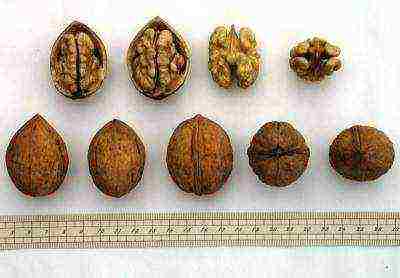 Cleaning
Cleaning
Nuts may not be peeled from the outer layer (pericarp), but peeled fruits germinate much faster.Peel the nuts carefully so that only the outer shell comes off and the inner one remains intact.
Manipulations are recommended to be performed in household rubber gloves, since dark marks are difficult to wash off of the pericarp juice on the hands.
Peeled nuts should be lowered into a bucket filled with water. For planting, select drowned fruits, since they have a whole kernel, therefore, such nuts are more likely to give good sprouts.
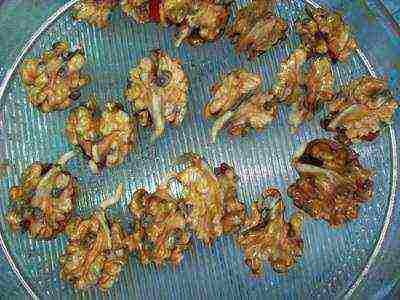 Drying
Drying
After cleaning from the outer green shell, the fruits are laid out in one layer to dry in the sun, and then (after 1-2 days) they are removed to dry in the shade. It is not recommended to dry fruits that will be used for planting in the future near heating devices. If you are going to plant walnut fruits in the fall, you do not need to dry them at all, but sow them immediately in the chosen place. Such seeds will sprout next year in May.
Planting in Autumn
A nut seedling develops a taproot, which grows to a great depth. And therefore, the fruits should be sown immediately in a permanent place, since the transplantation can injure this root.
The depth and diameter of the holes for walnut seeds should be up to one meter. This depth is required to provide the future tree with a supply of nutrients. Seeds are planted in holes to a depth of 15-20 centimeters. The soil selected from the pits is mixed with humus and returned back.
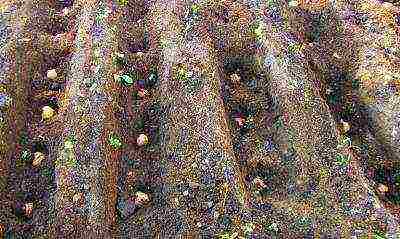
Nuts are laid on the bottom with a seam upwards, and not with a point, otherwise the tree will begin to bear fruit later.
Three to four fruits are placed in each hole, placing them at a distance of 20-25 centimeters (the fruits are planted in a triangle or square). The pit is filled up with the formation of a mound in the middle, and then the soil is compacted. Among the seedlings that have grown, the strongest is chosen. Seedlings grown from seeds should be properly pruned. It is necessary to water young walnut trees from May to July twice a month, per 1 m2, four buckets of water. Watering is delayed in rainy weather and stops in August.
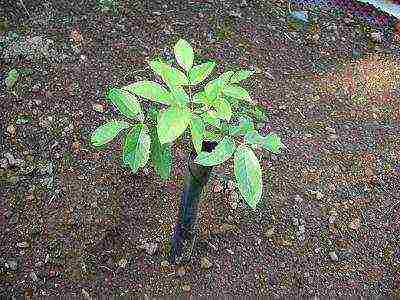 In the spring
In the spring
Seeds that will be planted in May need to be stored in a cool place, and stratification is performed about 3-4 months before planting. It provides for laying nuts at + 4 + 7 degrees in wet sand. Before putting nuts in the sand, you can keep them for a short time in a glass container filled with water (water temperature is room temperature).
In open ground, seeds are planted in May. Planting depth is within 7-9 centimeters. The first shoots appear in about ten days. By autumn, their height is approximately 10-15 centimeters. First, the seedlings grow upward, and then their trunks begin to thicken. If you water them abundantly in the summer, then the plants can grow taller, but in this case they overwinter worse.
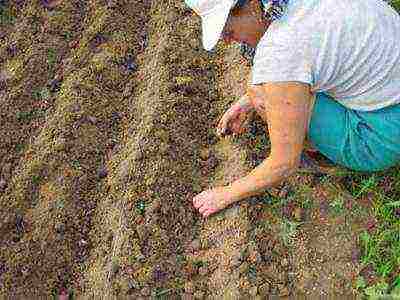 How to germinate a walnut at home
How to germinate a walnut at home
You can grow walnut seedlings at home in 500 ml plastic cups. The bottom of the glasses is pierced so that excess moisture is removed. The containers are filled with garden soil, and the nuts are placed to a depth of 5 centimeters. Having covered them with earth from above, watering is carried out and the glasses are sent to the balcony or to the basement. By the beginning of February, they are transferred to the house, watered abundantly and displayed on the windowsill.
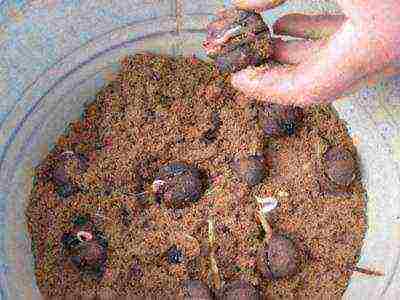
Seedlings in such glasses appear 2-3 weeks after returning to the house. When the plants reach 10 centimeters in height (usually after a month), they are transplanted into larger containers, for example, into cut 1.5-2 liter bottles. By sending these containers back to the windowsill, the plants are watered in a timely manner, since they require moderately moist soil.
In April, when the temperature rises to +15 degrees during the day, the plants can be transferred to a glazed balcony for hardening before planting in the soil at the end of May. At this time, there is no longer a risk of frost, and the seedlings reach a height of 20-25 centimeters.At the same time, we note that the nuts planted in the ground in autumn only begin to germinate in May, and they reach a height of 10-20 centimeters only by autumn.
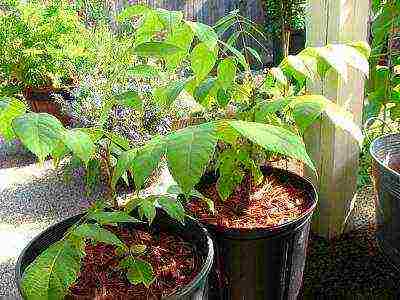 Propagation by seedlings
Propagation by seedlings
With this cultivation, seedlings are transplanted to a permanent place at 2 years of age in the spring. When digging up, you need to be as careful as possible, trying not to damage the roots on the sides. The central root, which by this age has already grown to a depth of more than a meter, is cut off with a pruner or knife at a depth of forty centimeters. The remaining wound is covered with clay.
The seedlings are planted in compacted soil to such a depth that the root collars rise above the soil level by three to four centimeters. The roots of the seedlings need to be well spread in order to return them to their previous position (before digging out). There is an opinion that a brick or a flat stone should be installed under the center of the root of the seedling so that the roots of the future nut are powerful, but it is wrong. Having installed the seedlings, the pits are covered with soil, after which the soil is compacted, watered and mulched, and excess branches are removed from the tree.
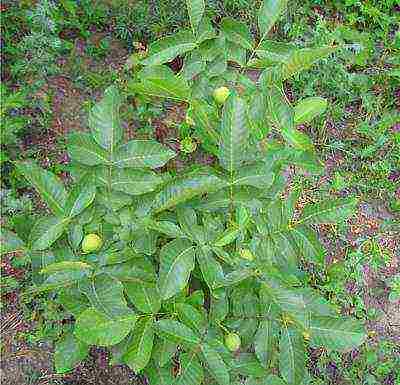 Graft
Graft
When growing a walnut, you always want to get a tree whose fruit performance will be good. However, most often, when propagated by seeds, seedlings do not retain the properties inherent in the parent variety, therefore, new plants are usually grafted. Harvesting cuttings for grafting is carried out from young walnuts, which are already bearing fruit. Since grafting is a very laborious task that requires certain knowledge, it is sometimes easier to acquire an already grafted seedling. Fruiting of the grafted tree begins at the age of 8-10, but if the crown is formed correctly and the care of the plant is good, then the first fruits appear already at the age of 4-5 years.
We advise you to watch the following video, which shows in detail how to properly graft a walnut.
Usually this is a huge, by our standards, tree up to 25 meters to Greece it has a very indirect relationship: the fruits were brought from the south, and "Greece has everything." Surely, it also grows there, wild forms of this tree are common in Europe.
The tree looks impressive. A separately growing nut not only differs in height - its crown also reaches a diameter of 20 meters.
By European standards, he is a long-liver (second after oak) - specimens of 300-400-year-old trees are often found.
The development of the tree begins with the formation of a powerful taproot, which reaches 1.5 meters in depth at the 5th year and 3.5 meters by the age of 20.
Horizontal ones do not grow immediately - they are formed after the core, located in the surface layer of the soil at a depth of 20-50 centimeters.
The tree begins to bear fruit after 10 years of life, and from the age of 30-40, the time of full fruiting comes.
If trees grow in groups, partially shading each other, they rarely yield more than 30 kg of yield, while a free growing nut can yield up to 400 kg of nuts.
But such cases are rare, only a tree 150-170 years old is capable of such a harvest. Usually an adult tree 25-40 years old in Moldova gives 1500-2000 fruits or 2000-2500 in the Crimea.
Moscow region, central Russia - where else can you plant and grow walnuts
They are found in the European part from the foothills of the Caucasus to St. Petersburgwhere the northernmost nuts in Russia grow. But these are isolated cases, exceptions that only confirm the rule.
These trees do not freeze completely, but they also do not grow at full strength.
The main factor that determines the possibility of growing this southern tree is not at all the winter subzero temperatures. The sum of average daily temperatures above 10 degrees is taken into account. It cannot be less than 190 C.
If in winter the temperature does not drop below -36 degrees and for 130-140 days a year the temperature is above 0 C, the walnut can grow and bear fruit.
The best winter hardiness was shown by hybrids of Manchurian with walnuts.
When planting even the best seed material brought from the south, adaptation to the cold climate does not occur - such trees freeze regularly and practically do not bear fruit.
Varieties from places with a humid warm climate are completely unsuitable for cultivation. (west and south of Ukraine, the Black Sea coast of the Caucasus).
Only nuts from eastern Ukraine, the mountains of Central Asia or the Caucasus are successfully adapting to the new conditions of central Russia.
Moreover, it is better to grow a nut from a bone on your own - an imported seedling (even from the indicated regions) will be significantly inferior in endurance and adaptability to new conditions.
 Walnut is found in the European part of Russia from the foothills of the Caucasus to St. Petersburg
Walnut is found in the European part of Russia from the foothills of the Caucasus to St. Petersburg
How and when to plant and grow a tree from a seedling: conditions
It must be immediately planted in a permanent place.... It is unrealistic to transplant a 5-year-old tree. Therefore, you need to decide to take into account all the factors and calculate the consequences.
A vigorous tree is capable of forming a dense shade over an area of approximately 100 sq. M. You will have to delete this area from circulation - under a walnut, there is little that can bear fruit (the strong suppressing effect of the biofield of a huge tree affects).
On the other hand, on this square, you can equip a summer recreation area - walnut essential oils keep flies and mosquitoes away.
We choose a place for planting at the edge of the gardenso as not to shade other trees. The nut is very unpretentious to soils, although it prefers loose sandy-stony soil.
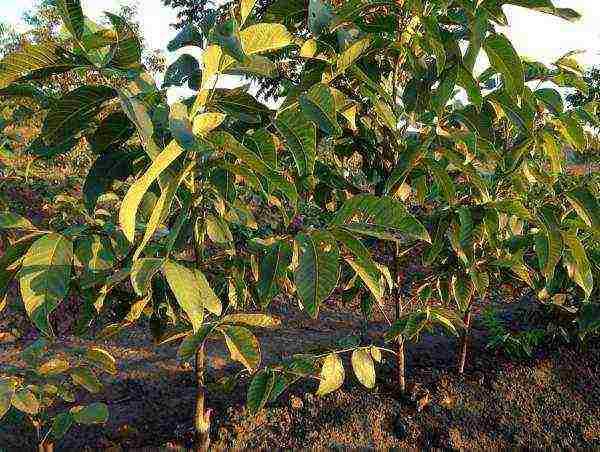 Walnut prefers loose sandy-stony soil, it should not be too fertile
Walnut prefers loose sandy-stony soil, it should not be too fertile
The planting hole is dug so that under the roots there is a layer of stones of at least 25 centimeters.
The bottom of the planting pit must be half filled with construction waste (broken brick, pieces of cement, crushed stone) - this technique allows you to shift the flowering time of the tree by 1-2 weeks (the stones slowly warm up, the nut starts growing a little later, skipping the period of frost).
Half a bucket of ash, compost or humus is introduced into the pit... The soil should not be too fertile, the nut will grow intensively and will not have time to prepare for winter.
A seedling for planting must be taken only from a trusted seller, otherwise you will not get anything except frostbitten branches of a southern tree, you probably will not wait for a harvest.
The walnut tree is planted only in spring, it enters the dormant period too early and does not have time to take root before winter.
It is believed that a nut planted with his own hand from a bone will grow into a tree practically adapted to new conditions, which will develop successfully.
Seeds are planted in the fall directly into the ground to a depth of 7-10 cm... It is advisable to lay in the soil sideways at the seam. Spring planting requires 2-3 months of stratification in wet sand.
Special care for the seedlings is not required - in the middle lane even the nut has no pests.
How to plant an annual nut seedling:
Post-planting care: in spring, summer and autumn
How to care? Walnuts may need watering only in spring and early summer.when there is an intensive growth of green mass. Usually, the soil reserve of winter moisture is enough for the tree.
Only young trees up to 5-7 years old are watered, if it is completely dry.
The pivotal root system of the southern tree is adapted to find water in the lower horizons. After 10 years of age, you should generally forget about watering the walnut.
For him, excess moisture threatens to grow too actively, to the detriment of the ripening and preparation of wood for winter. Freezing after a wet summer is guaranteed.
In addition to stopping watering, you need to take care of preparing the root system for winter. Therefore, trunks must be mulched with any organic matter or compost:
- in summer - to preserve moisture;
- in the fall - to protect the topsoil from freezing.
In especially cold areas, the soil is mulched with a layer of at least 10 cm, especially in areas with little snow.
It is useful to cover the stem up to a height of about 1 m with spruce branches or wrap it with newspapers in several layers (after the first frost). This will help you survive -40 degrees and below.
Such shelter is necessary only in the early years. - the wood must be naturally hardened.
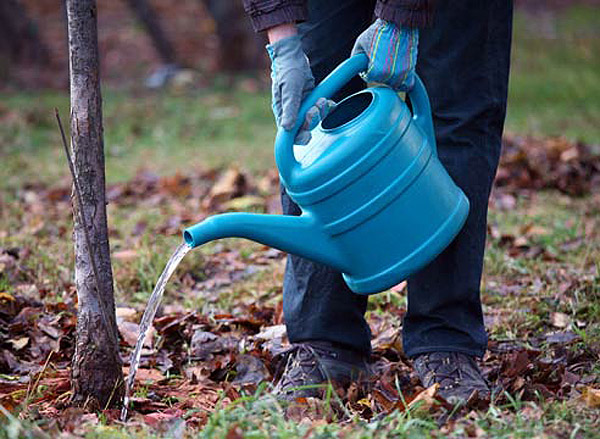 Walnut may need watering only in spring and early summer, when there is an intensive growth of green mass.
Walnut may need watering only in spring and early summer, when there is an intensive growth of green mass.
How to properly care for the cultivation process: before ripening and after
Like all fruit crops, walnut needs periodic feeding.
In the spring, nitrogen fertilizers are applied, in the second half of summer - only potash and phosphorus fertilizers, which are responsible for preparing the tree for winter and laying fruit buds for the next harvest.
On cultivated soil, nitrogen can not be fed at all, and phosphorus and potash fertilizers can be applied (in terms of the active ingredient) at 10 g / m2.
Practice shows that the rule applies to all cases when the nut does not grow on obvious stones and clay.
What is especially pleasing - in the middle lane, the walnut has no natural enemies... It has already been said that flies and mosquitoes fly around it.
Moreover, a very effective remedy against aphids and various caterpillars can be prepared from the leaves of the walnut, which is successfully used in Ukraine.
We advise: 2 kg of leaves per bucket of water - insist until the solution darkens, or boil. You can also use dry last year's leaves.
Home remedy absolutely harmless to humans allows you to process trees and bushes with fruit and berry ovaries.
Graft
Unfortunately, walnut cuttings do not take root - propagation occurs only by seeds.
Vaccination is carried out in cases where:
- there is a seedling of probably winter-hardy Manchurian walnut, for which -40 in winter is not a problem;
- the planted variety did not live up to expectations - there was an opportunity to re-graft it.
Annual seedlings are grafted into a split and grown under control in a greenhouse to a presentation.
Young trees that have already produced the first few nuts can be re-grafted by the type of "budding with an eye" - only the bark is removed from the bud in the form of a half-tube (the method is called that) and is combined with the same cut on the rootstock.
Until complete healing, the vaccination site is tied with a film.
The result of grafting an adult walnut tree:
Reproduction in the country
The main method of obtaining seedlings is growing from seeds... To simplify the process, the nuts are planted in the fall to a depth of about 10 centimeters without additional processing. It is believed that it is best to lay them sideways at the seam.
Those who did not have time to bury them for the winter, put them in the wet sand in the basement - the walnut must go through stratification, otherwise it will not hatch.
Walnut is renewed by pneumatic shoots in just a year or two. These trees are able to bear fruit literally in the second year, and at 10 - already a significant harvest.
 The main method of obtaining seedlings is growing from seeds
The main method of obtaining seedlings is growing from seeds
It turns out that walnuts can be successfully planted and grown in a dacha in the middle lane, in the Moscow region. It is enough just to follow simple rules:
- the right choice of place;
- seedling - only zoned;
- obligatory mulching of the trunk circle;
- shelter of the trunk from frost in the first years of life.
All this is within the power of most gardeners.... Choose a sunny spot protected from cold winds - the walnut will thank you.
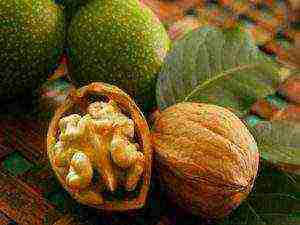
You may be thinking about how to grow a walnut from a nut. The walnut tree can live up to 300 years, and all this time no special care is required. It produces extremely healthy fruits that are not only tasty, but also have a healing effect, including the wood of the walnut, its foliage and other parts of the plant. The root system is very powerful. It penetrates deep into the ground. The tree is light and moisture-loving. Prefers fertile soil, where groundwater is located nearby.
How to prepare seeds for planting
Planting a walnut at home is easy. The main thing is to choose the right fruits, that is, the nuts themselves. It is reproduction by means of such seeds that is the main method.
Germination of a nut is carried out only after a year. In order for the process to go well, it is necessary to choose fruits that have a thin shell, as well as good taste. You should only use whole, flawless nuts. They can be collected both from branches and from the ground when they have already fallen from the tree.
The shell should look good. It should not have segments with damage, dots, spots and other defects. You can not use the fruits that were bought in the store, as they can be either spoiled, or unusable, or old in order to germinate them.
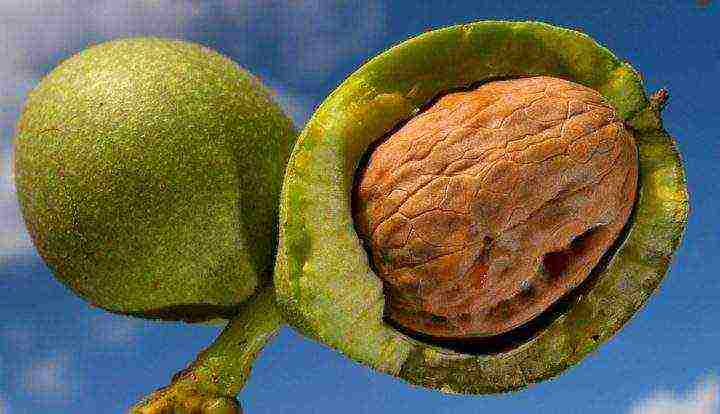
Walnut
It is recommended to remove the nut from the fruit. The membrane is called the pericarp. It may not be removed, but in this case the germination process will be significantly slowed down. During cleaning, care must be taken that the inner skin is not damaged. Only the outer part needs to be disconnected. At the same time, it is recommended to use rubber gloves or other protective equipment for the hands, since when in contact with the juice of the shell, the skin begins to darken.
When the nut is already completely peeled, it is supposed to be lowered into a container of water. Fruits, which gradually fell to the bottom of the container, are suitable for planting, since the kernels in them remained intact.
Now you need to dry the seed. To do this, it is supposed to be decomposed in one layer in a sunny place. After a couple of days, the fruits are recommended to be removed to a place under a canopy so that they dry out. Do not keep nuts that are selected for germination near heating appliances. If the seed is planned to be planted in the fall, then there is no need to dry it.
Planting seeds
You need to figure out when to plant walnuts. This can be done both in autumn and spring. In the first case, it is required to plant seeds immediately in the place that will be permanent for the tree, since then it will not be possible to transplant it without damaging the root system.
The hole should be about 1 m deep and about 1 m in diameter. This is required to provide the required amount of nutrient compounds for the tree in the future. The nuts are supposed to be deepened by about 20 cm. You need to fill in the seed with a mixture that includes humus and soil. It is necessary to place the seeds so that the seam is at the top. There are 3 nuts per hole, which are placed at a distance of 20 cm from each other. They must be laid out in the shape of a triangle.
Then you need to sprinkle the hole and tamp the soil. Of those seeds that have sprouted in the hole, only the strongest and best developed are chosen. Watering should be done between May and July. 4 buckets of water are required per square meter. If the weather is rainy, then watering is not carried out. When summer comes to an end, then the humidification should be stopped altogether.
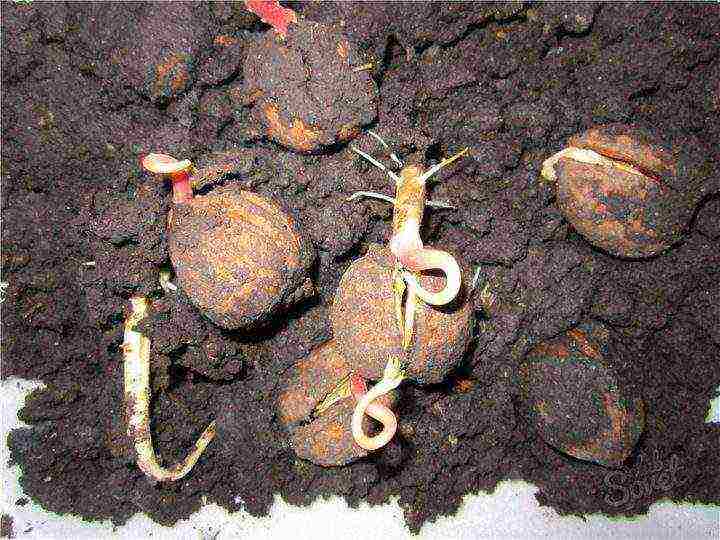
Sprouts appeared
If you want to grow a nut in springtime, then it is best to carry out the planting process in May. This is especially true in many regions in Russia, where winters are very cold. If you plant a nut in such areas in the fall, then there is a chance that the seed will freeze and not germinate. In the spring, planting a nut is supposed to be in May. Until this time, the seed should be kept in a cool place for stratification for 3-4 months. When planting nuts, the temperature should be approximately + 4 ... + 7 ° C.
It is required to place the fruits in wet sand. Before this, the nuts must be kept in a container with water for some time (the temperature should be at room temperature). Then they need to be deepened 8 cm into the ground. After about 10 days, the first shoots will appear. By the fall, they will already grow by 15 cm. At first, the shoots stretch upward, and only then they begin to gradually thicken. If watered abundantly, the length of the sprout will be longer, but at the same time it is more difficult for it to endure the winter.
It is necessary to decide where the walnut grows well.It is imperative to choose the right place for planting so that the tree is comfortable. It prefers places with good lighting. The area should be spacious, as the tree needs space for a spreading crown. Then the fruits themselves will ripen on all branches. A minimum of 5 m should be left before the next tree, as the root system will be very powerful. You cannot grow a nut near a house or other buildings, as it will damage the foundation. If the soil is poor in nutrient content, then it needs to be fertilized. It is best to plant the tree from the southwest or south side, away from the building.
Tree care
All garden work begins in the spring. If in the second half of March the temperature is not less than 4 ° C, then it is recommended to trim walnuts for sanitary purposes, as well as for crown formation. If at this time, due to bad weather, it is still impossible to carry out pruning, then it is recommended to carry out this procedure at a later date, but in any case before the sap flow begins.
In springtime, the tree needs a lot of moisture. If there was little snow in winter, and the spring was not rainy, then additional watering is required. In addition, it is necessary at this time to carry out prevention against various diseases and pests in order to grow a nut tree strong and healthy. It is recommended to use a solution of copper sulfate (3%). In addition, it is additionally necessary to whitewash the trunk with lime. In May, you need top dressing. At this time, it is recommended to add ammonium nitrate. A large tree is supposed to have about 6 kg of this substance per year, this rule applies to those trees that are more than 3 years old. Those fertilizers that are laid when planting a seedling are enough for this time.

Young trees
If the summers are dry and hot, the tree should be watered periodically. In the period from May to July, watering is supposed to be carried out 2 times a month. After moistening the soil should not be loosened, since this particular plant does not like this procedure. But the weeds must be removed so that they do not interfere with the tree. In the summer, walnuts can suffer from insect pests or fungal diseases, so it is very important to periodically inspect the plant so as not to miss the onset of the disease. As soon as the first symptoms appear, it is necessary to use drugs from the group of fungicides or insecticides.
In the last week of July, it is recommended to pinch those shoots whose growth needs to be accelerated. They must have time to form before the cold snap begins, otherwise they will die from frost in winter. In addition, at this time, it is supposed to carry out top dressing using fertilizers that contain potassium and phosphorus. In some varieties, the fruits ripen at the end of summer. You need to be ready to harvest.
As for autumn, almost all varieties of walnuts have this time for harvesting fruits. It usually starts at the end of August and ends around the end of November. After harvesting, you need to put the garden in order. First, the tree is pruned for sanitary purposes, then it is necessary to collect all the foliage that has fallen, and shoots. Additionally, it is required to treat the tree from pests that could settle in its bark for the winter. In addition, agents against pathogenic bacteria are used.
At the same time, the plant must be prepared for wintering. The nut is considered a plant that loves warmth. Some varieties are only able to grow in places where there is no cold in winter. But there are also varieties of trees that can withstand frosts down to -30 ° C. An adult tree can overwinter without additional shelter, but young plants, which are no more than a year old, need to be insulated. For this, it is supposed to use burlap. In addition, mulch helps with manure.
Conclusion
If now we understand how to plant a walnut, it's time to start ...

